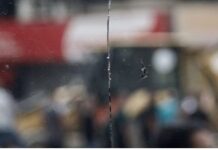Hind Khoudary
Al-Jazeera / December 27, 2020
The Yasser Arafat International Airport, now in ruins, was more than a project – it was a symbol of Palestinian freedom.
It was 7am on June 2, 1996, in Cairo when Captain Zeyad al-Bada received a surprising phone call from Palestine Liberation Organization leader Yasser Arafat.
Arafat told Al-Bada, then a 39-year-old Palestinian Airlines captain and Arafat’s personal pilot, that he would be the first to land at the newly built Gaza International Airport.
“There were no aerial maps, no radars, the Gaza airport wasn’t even globally recognised,” al-Bada, now the airline’s general director, told Al-Jazeera.
Cairo International Airport refused to create a flight plan to Gaza until Arafat asked then-Egyptian President Hosni Mubarak to intervene and order the Egyptian Civil Aviation Authority to issue one.
Al-Bada worried that he would be landing on an “asphalt street” rather than a high-quality runway. His hands and legs were shaking during the flight, and he burst into tears of joy as he made his descent to the airport.
“As I was landing I saw crowds of people dancing, I spontaneously grabbed a small [Palestinian] flag from Yasser Arafat’s closet and raised it out of the window, greeting the crowds.”
Al-Bada flew 55 trips to different destinations in and out of Gaza International Airport after its official inauguration in 1998 as part of the Oslo Accords, before flights were halted on October 7, 2000, following rising tensions between Israel and Palestine.
It was destroyed by Israeli forces during the Second Intifada [from 2000 onwards], a Palestinian uprising against Israeli occupation.
Those who worked on the airport in the Palestinian enclave – which has been under an Israeli-Egyptian blockade since 2007 – recall the pride they took in its construction and the pain that remains almost 20 years on from its destruction.
My father – who passed away eight years ago this month – was among those who helped build this profound Palestinian symbol in a territory under siege.
A runway in 45 days
Arafat initiated the airport project in 1994; it was just outside the southern town of Rafah, near the border with Egypt.
My father, Usama el-Khoudary, was a Palestinian subcontractor engineer who won the tender to construct the runway and the airport apron where the planes are parked. He bid low, a bid that did not make him a profit.
“Usama didn’t care about the price of the bid, he wanted to be part of the Gaza International Airport, he wanted to be part of this history,” his wife, and my mother, Marwa el-Khoudary told Al-Jazeera.
“He was in his 30s when he won the bid, I remember his eyes sparkling the day he was announced as a tender winner.”
I am the only daughter among nine children. I was five months old when my dad began working on the project. My father believed that the birth of each of his children won him a new tender. Hammam, my eldest brother, told me: “Your gift to dad was the airport bid.”
“I don’t think I saw him for more than an hour during the 45 days,” my mother recalled.
The project started in early 1996 with approximately 150 workers and only four vehicles, laying about 3,000 to 3,500 tonnes of asphalt per day.
My father worked in cooperation with NORCO, which was the only asphalt and paving company in Gaza when it was established in Jabalya in 1993.
He told Al-Jazeera that Israel had tried to stall the building of the airport, blocking materials and impeding vehicles accessing the site they were working on day and night.
“We worked 24/7, but we were happy, it was a dream we were making true with our own hands,” Al-Atwneh told Al-Jazeera.
“We, the asphalt workers and engineers, were there to celebrate the first time the plane landed in the Gaza International Airport,” he said. “The plane landed for the first time without any cracks, everyone was so proud of us!”
But Israeli forces bulldozers first tore the runway up in 2001 during the Second Intifada.
“Usama and I went to the airport in the morning following the Israeli demolition. We were very sad but we didn’t lose hope,” Yasser Rehan, NORCO’s owner, told Al-Jazeera with a trembling voice. My father and Rehan fixed the runway.
But Israeli forces carried out air raids in 2001 and in subsequent years that completely destroyed the airport and the runway.
Gaza under siege
My father’s engineering and construction company had been established in 1985 and carried out 58 projects across Gaza, including The Fish Market, Al-Karama Towers, and Qattan Centre for the Child, as well as several school, infrastructure, and housing projects.
But he left the Gaza Strip in 2007. He passed away in December 2012 at the age of 51, leaving behind more than $2m in debt due to a hospital construction project that was abandoned due to the blockade.
Meanwhile, there are still debts related to the airport project 20 years on.
Rehan told Al-Jazeera that, due to a disagreement, the Palestinian Authority has still not paid the contractors for the project, who in turn still owe the subcontractors 2 million shekel ($615,000) for its work on the airport’s runway. The PA did not respond to a request for comment.
Meanwhile, Rehan sold NORCO in 2007 and has been forced to halt all his work due to the blockade, which has crippled Gaza’s construction industry.
Al-Atwneh has been unemployed for 10 years – just one of the many thousands without work in the Gaza Strip.
Five of my brothers and I left the Gaza Strip in order to find a better income to repay our father’s debts. Three of my brothers remain in Gaza with my mother.
Our father’s death was a turning point in my family’s life, especially me for being my father’s only daughter. I got my strength from my father to become a successful journalist.
Gaza airport was more than a project. It was a symbol of freedom for Palestinians. Flying the Palestinian flag in the sky was the dream of every Palestinian.
Bombed out buildings are nothing extraordinary in the Gaza Strip. But the airport is different, the dream of Palestine is completely ruined.
A runway that was built in 45 days with passion and hope is now a pile of sand. You cannot even imagine that a plane ever landed there.
Every time I was working in Rafah and passed by the ruined airport, all I felt was heartache.
But Captain al-Bada told Al-Jazeera that he is helping to draw up plans to establish a new airport at a different site in Gosh Gatif, in the southern Gaza Strip.
He said he will seek construction approval with the PA after the planning and designing stages are completed and funds are sourced.
Although many believe that Israel will never allow Gaza to have a new airport, Al-Bada remains optimistic of reviving this Palestinian dream since it was achieved before.
“I landed the first plane there without any facilities and navigation in 1996,” al-Bada said. “I believe I will fly again from Gaza to the world.”
SOURCE : AL-JAZEERA












